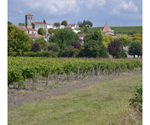Category: The Land and The Vines
Cognac can only be made in a specific region of France. Here we explore the uniqueness of the region known as The Charente. .
First Harvest of New Vine Varieties
The Bureau National Interprofessionnel du Cognac (BNIC) is the organisation whose role is to promote, protect and develop the Cognac Geographic Indication and its culture. In September their technical arm, Station Viticole, reported that one of their research programmes had seen new varieties of vines, resistant to mildew and powdery mildew, harvested in the region. Six experimental plots are the result of 20 years of collective research work in partnership with the French National Research Institute for Agriculture, Food and the Environment (INRAE), the French Institute of Vine and Wine (IFV), and the main producers in the cognac industry. The… Read more

The Land and The Vines Part 2 – The Vines
By the turn of the 19th Century, Ugni Blanc had replaced Folle Blanch and Colombard as the most widely used grape for producing Cognac. Grafted onto a new rootstock it helped the Cognaçaise rebuild their industry after the Phylloxera outbreak. At about the same time producers started to plant their vines in rows, rather than the uneven bush planting method used previously, and a greater concentration of vines per hectare was achieved. More recently this has enabled the use of grape-picking machines and with careful pruning the vines, which are now grown on wires, reach a height of 1.2 –… Read more

The Land and The Vines Part 1 – Terroir
The French have a word, ‘terroir’ which cannot be directly translated into another language but refers to the land, the weather, the climate and just about anything which affects the quality of the vine and the conditions in which it grows. In the Charente the ‘terroir’ is very special, in theory the component parts could be reproduced anywhere but here the result is unique. According to Professor Louis Ravaz (who did a great deal to help replant cognac vineyards after the Phylloxera disaster), “The same variety of grape can be grown anywhere and in the same way as in the… Read more
